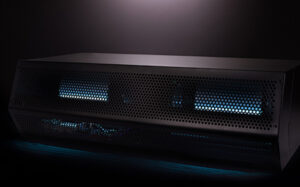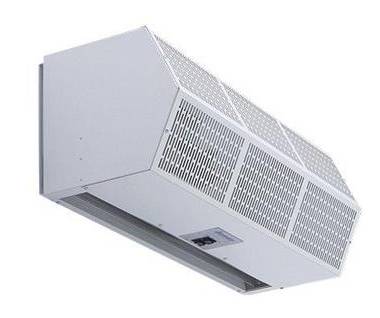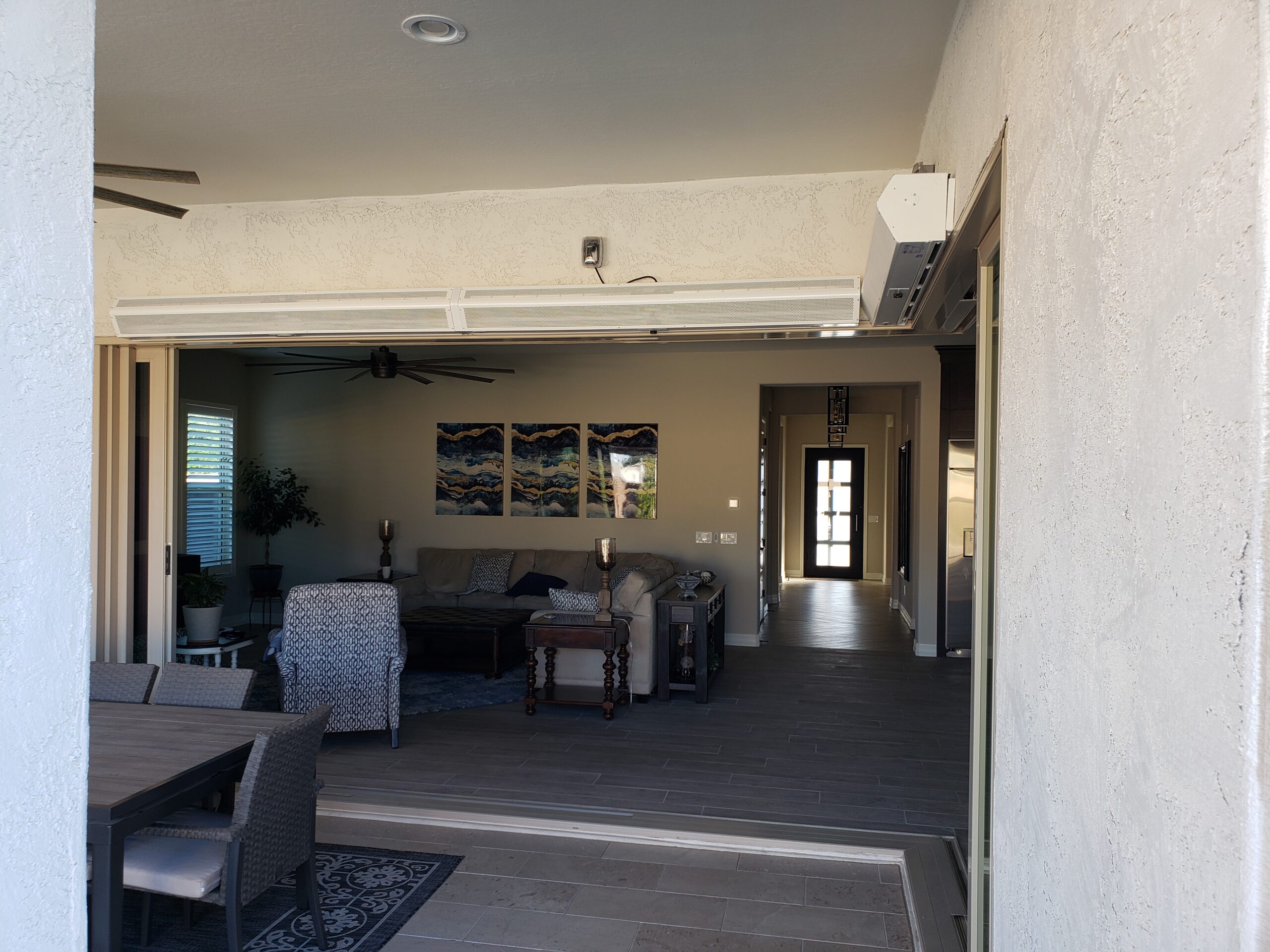As companies, retail businesses, and even individual homeowners continue to search for ways to both purify their indoor air and improve the energy efficiency and thermal performance of their buildings, the air curtain industry is well-posed for long-term economic growth. One recent market analysis found that the global air curtain market is projected to grow at a compound annual growth rate (CAGRI of 4.5 percent over the forecast period of 2018-2024. Even before the COVID-19 pandemic put a renewed focus on the importance of purified air and improved indoor air quality, the appeal of air curtains and air doors was widespread.
Proper installation of an air curtain has been proven to reduce the operational costs of a building via lowering the energy losses from the conditioned space. This subsequently results in lower CO2 emissions and a lower carbon footprint associated with the heating and cooling of indoor spaces. Air curtains or air doors can also play a major role in maintaining a comfortable interior environment for employees, customers, and others, while simultaneously helping to control pests and insects inside the buildings. With the adoption of UV and other air purifying technologies, air curtains can also play a major role in reducing the dangers from airborne contaminants, including pathogens such as bacteria and viruses.
For all these reasons and more, air curtains and air doors will most certainly continue to grow in popularity, especially now that the recently released ASHRAE building standards allow for air curtains to replace the more costly vestibules for business entrances.
Two of the leading companies in the air curtain industry are Mars Air and Berner Air Curtains. Both of these companies have proven track records in the industry and have developed an impressive portfolio of diversified air curtain products directed towards different industries and uses. Air Door Distributors is proud to sell a huge variety of air curtain and air door products from both Mars Air and Berner Air Curtains. This short article will briefly look at the history of both of these companies before looking at some of the highlights of these leading air curtain manufacturers.
A Bit of History on the Two Companies
Though the first patent for an air curtain was given in the year 1904 to an inventor by the name of Theophilus Van Kannel, it wasn’t until the 1960s when air curtain technology truly began to take off in the United States. The Dyfoam Corporation based out the United Kingdom was one of the pioneers in popularizing this technology in Europe. The Miniveil Corporation, which later became Berner International, brought the Dyfoam air curtain technology to the United States, with the first air curtains being manufactured by Berner International in 1960.
Two years after the first air curtain was manufactured by Berner in the United States, Mars Air began making and selling their own products that they called air doors in order to distinguish the product from others on the market. According to Zoom Info, Mars Air System which is based out of Gardenia, California has an annual revenue of $10 million. Berner International, which is based out of New Castle, Pennsylvania, has an annual revenue of $22 million. Both Mars Air Systems and Berner International are the leading companies in the air curtain industry.
Product Portfolios of Berner International and Mars Air Systems
One of the main advantages of these companies is that both of them have an impressive product portfolio, designing customized air curtains and air doors for different industries and purposes. Mars Air Systems offers the following line of products:
- LPV2 Lo-Pro 2 Series: These low-profile air curtains offer a low-noise line with variable speed control. They are ideal for customer-facing commercial installations.
- STD2 Standard 2 Series: These air curtains offer a unique commercial and industrial hybrid application and comes with a powerful ½ horsepower power motor.
- PH Phantom Series: These air curtains are perfect when you need the device to blend in with the building’s aesthetics and when recess-mounting and unit concealment are preferred without any sacrifice to performance.
- QP Quiet Pro Series: These products claim to have half the perceived noise output of traditional air curtains due to their unique internal dampening design and anti-vibration technology.
- CA Clean Air Series: These air purifying products can collect and kill airborne particles and pathogens by using a True HEPA filter, MERV 7-8 rated pleated pre-filters, and a plasma generator and UVC bulbs with germicidal capabilities.
- HV2 High Velocity Series: These air doors are strong enough for industrial applications with a 1 HP motor. For even more power, their EP2 Extra Power Series comes with a 3 HP motor for industrial and warehouse settings.
- Wind Stopping Series: Mars Air also has a unique line of wind stopping systems that can be used in areas where strong gusts of wind are common.
Similarly, Berner International has a diverse line of air curtain products that are designed for different uses and applications.
- Architectural: Their line of architectural curtains combine aesthetics and the customer experience of the indoor space, and are designed to either enhance or replace a vestibule for further energy savings.
- Commercial: Their line of commercial air curtain products are intended to meet the functional needs of the space while integrating with the door or window opening.
- Sanitation Certified: These air curtains are excellent options for restaurants and kitchen designers who need to meet food service standards and/or health department requirements for flying insect control.
- Industrial: The company´s line of powerful industrial air curtains are offered in both belt-drive and direct-drive models and are great options for manufacturing plants, distribution centers and warehouses to keep temperatures stable and flying insects out when the doors are open.
- Hazardous Location: Berner International also manufactures air curtains for industries that operate in potentially hazardous locations, including manufacturing plants, CNG bus garages and pharmaceutical plants.
- Drive-Thru: The company also has a line of compact air curtains designed for drive-thru windows that will keep employees working the window comfortable during all kinds of weather, and safe from carbon monoxide fumes and flying insects.
Both Berner International and Mars Air Systems have high-quality air curtain solutions that can be adapted to virtually every need. You can see Air Door Distributor´s complete list of Mars Air products here, and our list of Berner air doors here. Contact us today +1 (866) 672-8874 for help determining which of these companies has the best product for your particular needs.















